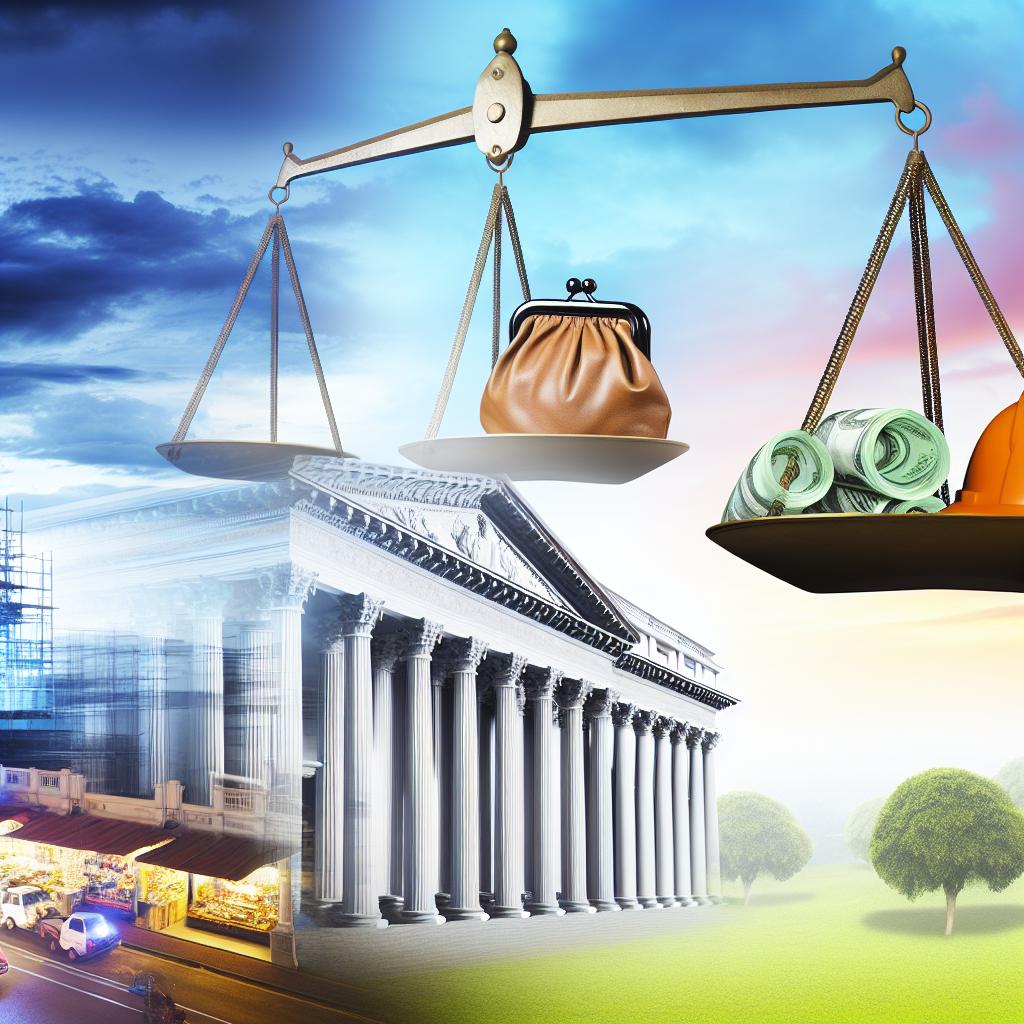What is Fiscal Policy? Government Spending and Taxation
- Written by: admin
- Category: Uncategorized
- Published: April 20, 2025

Understanding Fiscal Policy
Fiscal policy refers to the use of government spending and taxation to influence a nation’s economy. It plays a crucial role in managing economic activity, ensuring economic stability, and promoting growth. Policymakers use fiscal policy to adjust their budgetary allocations and taxation rates, impacting the overall demand within the economy.
The Role of Government Spending
Government spending is a core component of fiscal policy. It involves the allocation of funds by the government towards various programs and services, such as infrastructure, education, healthcare, and defense. The level of government spending can determine the amount of money circulating within an economy. During periods of economic downturn, increased government expenditure can stimulate growth by boosting demand for goods and services.
Types of Government Spending
There are several categories of government spending, each with its unique impact on the economy.
Capital Expenditure: This involves long-term investments such as infrastructure projects and public works, which enhance the productive capacity of the economy. Examples include building roads, bridges, and schools. Capital expenditure not only creates jobs during the construction phase but also improves overall productivity in the long run by providing the necessary infrastructure for businesses to thrive.
Current Expenditure: These are recurrent costs necessary for operating government services. Examples include wages and salaries for public sector employees, maintenance of infrastructure, and daily operational expenses. Current expenditure ensures the smooth functioning of government operations and the delivery of essential services to the population.
Taxation and Its Impact
Taxes are the primary source of government revenue and an essential tool for fiscal policy. By adjusting tax rates and structures, governments can influence the level of disposable income for both individuals and businesses.
Higher taxes generally lead to a reduction in disposable income, which can slow down economic activity by decreasing consumer spending and business investments. On the other hand, lower taxes increase disposable income, encouraging spending and investment, which can stimulate economic growth.
Types of Taxes
Different kinds of taxes have varying effects on the economy:
Direct Taxes: These are levied directly on income, wealth, or corporate profits. Examples include income tax, property tax, and corporate tax. Direct taxes are usually progressive, meaning that individuals with higher earnings pay a larger proportion of their income in taxes.
Indirect Taxes: These are applied to the sale of goods and services, impacting consumers indirectly. Examples include value-added tax (VAT) and sales tax. Indirect taxes can be regressive, where lower-income individuals may spend a higher proportion of their earnings on these taxes than wealthier individuals.
Balancing Inflation and Unemployment
Fiscal policy is utilized to balance the twin economic challenges of inflation and unemployment. Governments often adjust their fiscal strategies to address these issues.
During periods of high inflation, the government might reduce its spending or increase taxes to cool down the economy. This approach helps decrease the money supply and curb inflationary pressures. However, this can sometimes lead to increased unemployment due to lower demand.
Conversely, during times of high unemployment, the government may adopt an opposite approach by increasing spending and cutting taxes. Such measures aim to stimulate demand, encouraging businesses to hire more workers to meet the increased demand for goods and services.
Expansionary vs. Contractionary Fiscal Policy
The distinction between expansionary and contractionary fiscal policies is essential in understanding how governments use these tools to manage economic conditions.
Expansionary Fiscal Policy: Typically implemented during a recession or economic slowdown, this approach aims to stimulate economic growth by increasing government spending and cutting taxes. The goal is to boost aggregate demand, encouraging consumption and investment to revitalize the economy. By doing so, unemployment rates are expected to decrease as businesses expand and create more jobs.
Contractionary Fiscal Policy: Used primarily to combat inflation, contractionary policy entails reducing government expenditure and increasing taxes. The objective is to decrease the overall money supply within the economy, cooling down inflationary pressures. While effective in stabilizing prices, it can also slow economic growth and increase unemployment if over-applied.
The Importance of Fiscal Policy Coordination
Coordination with monetary policy is essential for the effectiveness of fiscal policy. While fiscal policy is managed by the government, monetary policy is controlled by a country’s central bank and involves managing the money supply and interest rates.
Together, these policies can work synergistically to stabilize an economy, promote sustainable growth, and ensure full employment. For instance, during a recession, an effective combination of expansionary fiscal policy and accommodative monetary policy can help restore confidence, encourage spending, and accelerate recovery. Conversely, to address inflation, a tight fiscal stance, along with higher interest rates, can help stabilize prices.
Coordination is crucial as conflicting policies can lead to economic instability. For example, if fiscal policy is expansionary while monetary policy is contractionary, it may result in mixed signals to investors and consumers, undermining policy effectiveness.
In conclusion, fiscal policy is a fundamental tool that governments use to influence economic activity. Its careful calibration can help address key economic issues such as inflation, unemployment, and economic stability. Through strategic use of government spending and taxation, alongside coordination with monetary policy, fiscal policy serves as an important mechanism for nurturing a healthy and growing economy.
This article was last updated on: April 20, 2025

